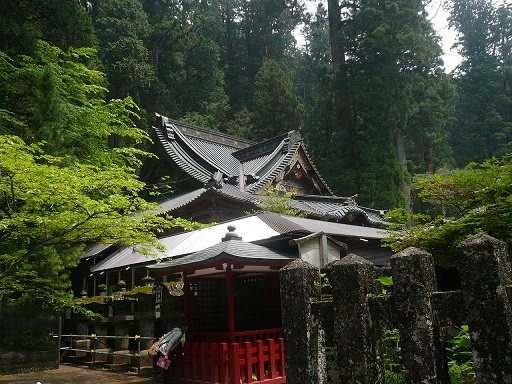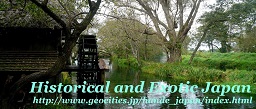From the end of the bridge, you will see a small shrine where Saint Shudo and "Jinsha Daisho" were deified.
In May, red color of the Shinkyo Bridge well matched with fresh green of trees along Ohya River. The current bridge was re-built in 1904 and is designated as an important property of Japan.
The Shinkyo Bridge belongs to Nikko Futarasan Shrine. Although the location of the Sinkyo Bridge is at the entrance of Nikko Shrines and temples, the main area of Nikko Futarasan Shrine is located behind Rinnoji Temple and west side of Nikko Toshogu Shrine.
If you walk to the west from Nikko Toshogu Shrine, you will see a two-storied gate of the shrine.
The gate was built in 1987, but it fits well to the historical atmosphere of Nikko area.
After passing through the two-storied gate, you will see the main hall and the Worship Hall.
The Main Hall was built in 1617 by the second "Shogun", TOKUGAWA Hidetada

 Home Page in Japanese: "Shane's HomePage"
Home Page in Japanese: "Shane's HomePage"

 Home Page in Japanese: "Shane's HomePage"
Home Page in Japanese: "Shane's HomePage"